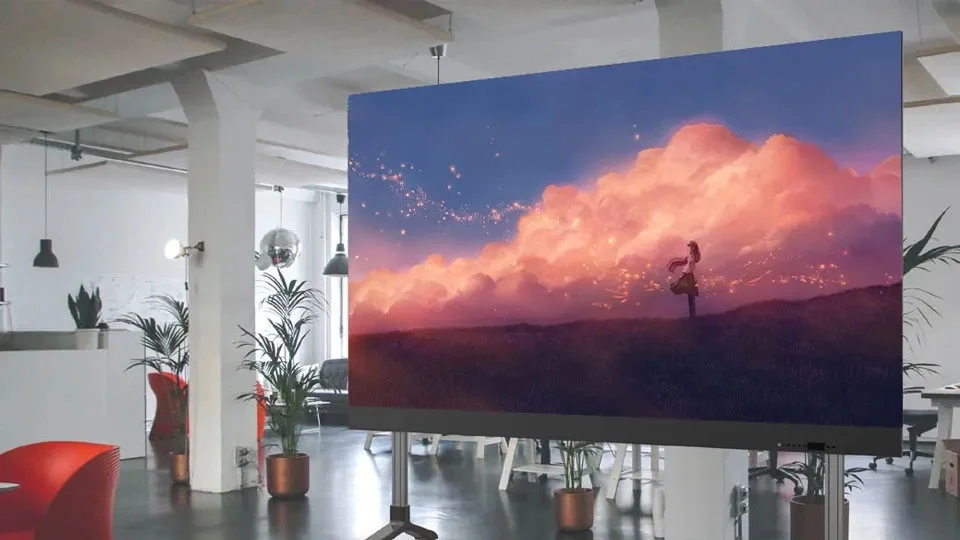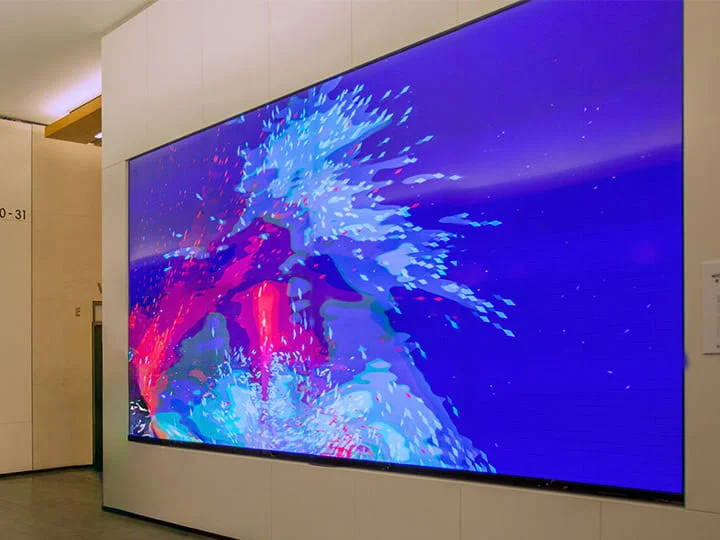On all LED displays, from huge billboards to video walls fine pitch internals, image quality depends on a critical specification: Pixel pitchThis small measurement determines the sharpness, clarity, and readability of your content. Understanding how pitch works helps you select the right screen for your viewing distance, budget, and performance needs.
What is Pixel Pitch?
Pixel pitch is the distance (in millimeters) between the centers of two adjacent pixels on an LED module. Each pixel is composed of three diodes: red, green, and blue, which emit light and form images when combined.
A smaller pitch means pixels are packed closer together, resulting in higher resolution and sharper image detail. A larger pitch increases the spacing between pixels, decreasing resolution but increasing brightness and reducing costs.
How Pixel Pitch Affects Image Quality
- Resolution and details: small pitch LED displays (P1.2, P1.5, P2.5) display more pixels per square meter, providing sharper visuals ideal for control rooms, studios, and retail displays.
- Viewing distance: As pixel pitch increases, the minimum comfortable viewing distance also increases. A P1.5 screen looks perfect from 1.5 to 2 meters away, while a P1.5 screen looks perfect from 1.5 to 2 meters away. P6 looks best from 6m or more.
- Brightness and power: A larger pixel pitch allows for higher brightness because the diodes have more room for heat dissipation and can operate at higher currents.
- Cost efficiency: Reducing pixel density decreases component count and power consumption, lowering the total project cost for large outdoor installations.
Common LED pixel pitch categories
| Application | Typical pixel pitch | Viewing distance |
| Fine-pitch LED walls for indoor environments | P0.9 – P2.5 | 1 – 3m |
| Indoor rentals/stage performances | P2.6 – P3.9 | 3 – 5m |
| Outdoor advertising screens | P4 – P10 | 6M + |
| Billboards in stadiums and on highways | P10 – P16 | 10m + |
Choosing the correct pixel pitch ensures that the display provides the best visual clarity for the intended environment.
Relationship between pixel density and pixel pitch
- P2.5: about 160,000 pixels/m²
- P3.91: about 65,000 pixels/m²
- P6: about 27,000 pixels/m²
Smaller pitch → higher density → sharper details.
Larger pitch → lower density → optimized for long distance visibility.
Fine pitch LED display
Fine-pitch LED displays (below P2.5) are designed for environments that require close viewing and high levels of detail, such as corporate lobbies, broadcast studios, and reception centers. These panels utilize high-precision diodes and advanced calibration to achieve consistent color and brightness across every pixel.
Fine pitch screens offer:
- Perfect image quality with no visible pixel separation
- Wide viewing angles with stable color reproduction
- Low-latency performance for real-time video and data streaming

Wide-range LED displays
Wide-angle LED displays (P6-P10 and above) are ideal for outdoor and long-distance viewing applications such as billboards, stadium screens, and building facades. They prioritize brightness, durability, and weather resistance over ultra-fine detail.
Advantages include:
- High brightness levels (5,000 – 10,000 nits) for sunlight visibility
- Strong IP-rated protection against rain and dust
- Low maintenance and easier module replacement

How to choose the correct pixel pitch?
To select the correct pixel pitch, consider:
- Viewing distance: Multiply the pixel pitch by 1.2 – 1.5 to estimate the minimum viewing distance in meters.
- Screen size: Larger screens can use higher pitch values without losing sharpness.
- Content type: Thin text or detailed video requires a smaller pitch; large graphics or advertisements may use a larger pitch.
- Installation environment: Indoor settings benefit from fine pitch modules; outdoor areas require higher brightness and larger pitch for longer life.
How much does the pixel pitch video wall effect cost?
The pixel pitch of an LED display significantly influences its total cost. Here's how:
- Lower Pitch = Higher Cost
Fine pitch displays (P1.2, P1.5) require individual LED chips to fill the same screen space. These smaller pixels require greater manufacturing precision, quality control, and material costs. As a result, the cost per square meter increases for fine pitch displays. - Greater distance = Lower cost
As the pixel pitch increases, fewer LEADs are required per square meter, reducing production costs. These displays are more cost-effective and ideal for billboards or large signage viewed from a distance.
In essence, smaller pixels are perfect for applications that require fine detail and close-up viewing, but they come at a higher cost. Larger pixels balance performance and cost, especially in environments with greater viewing distances.
Pixel Pitch vs Resolution
- Pixel pitch refers to the physical spacing between pixels.
- Resolution refers to the total number of pixels (width x height) used to form the image.
Pixel pitch affects pixel density, which directly impacts resolution. For example, a P2.5 LED display will have higher resolution per square meter than a P6 display, even though both have the same screen size. The higher the pixel density (smaller pitch), the more pixels will be packed together, resulting in higher resolution and sharper images.
Final considerations
In LED display technology, pixel pitch defines everything about visual performance. It determines the level of detail in your content, the distance at which it can be clearly viewed, and the system's operating cost. By analyzing viewing distance, screen size, and installation type, you can choose the optimal pixel pitch value for crisp, reliable, and cost-effective display performance.
